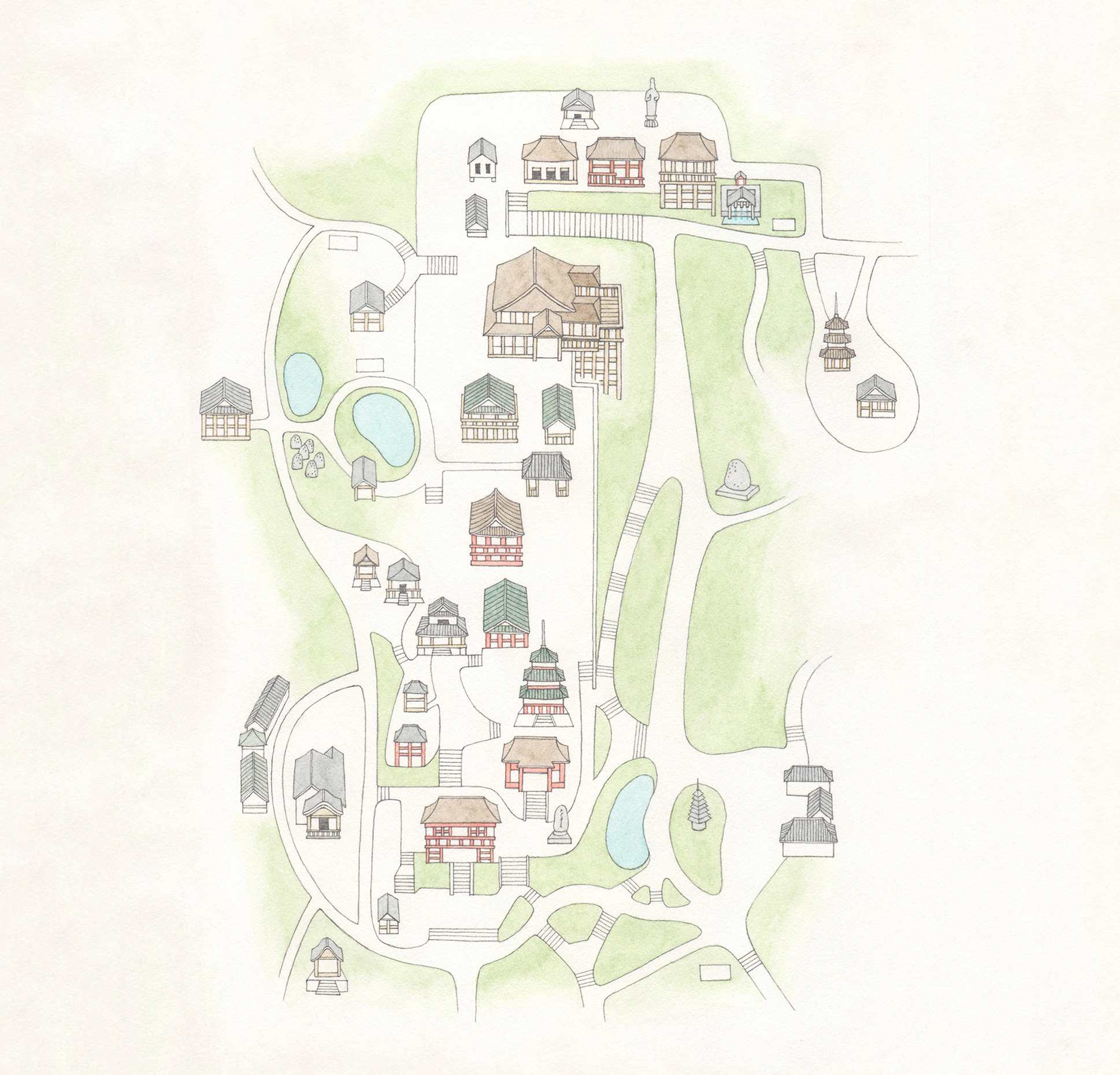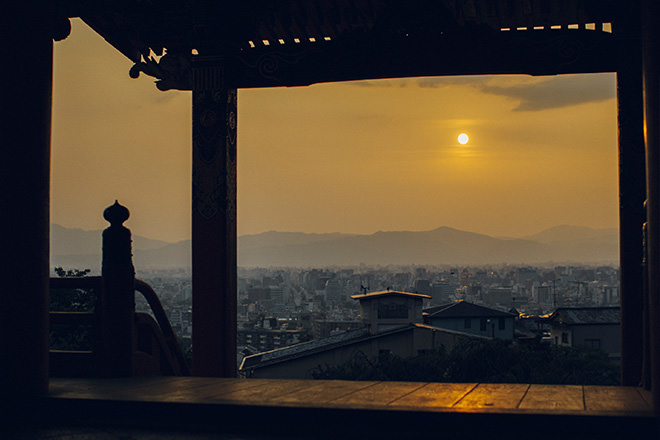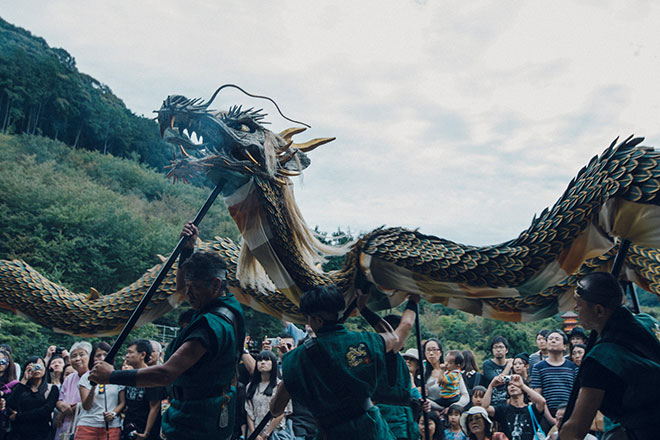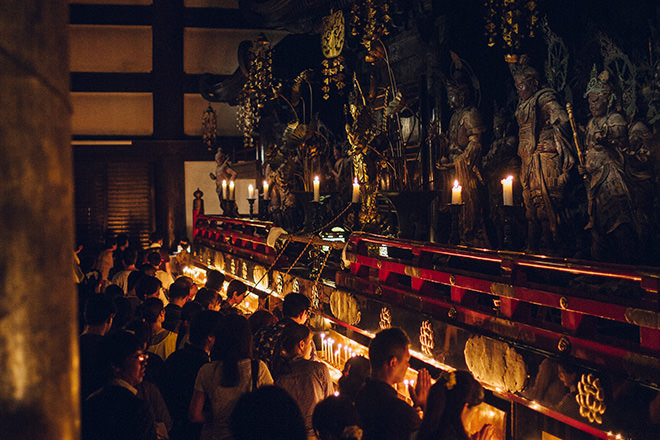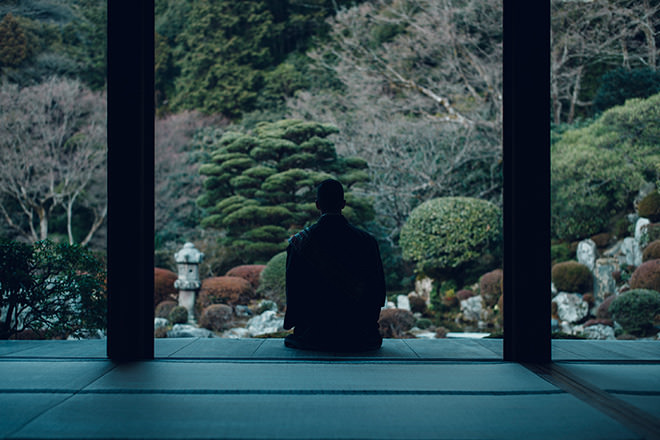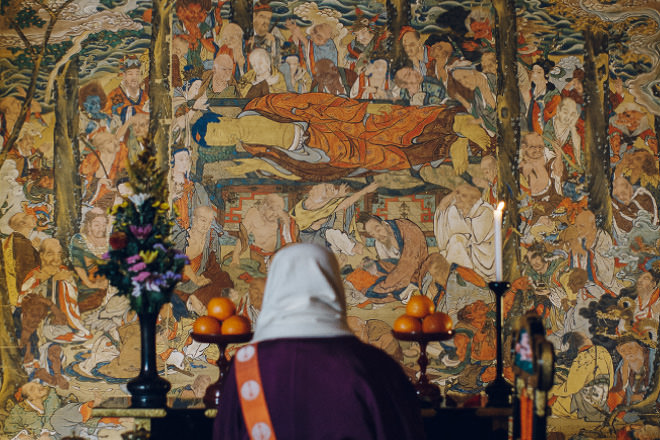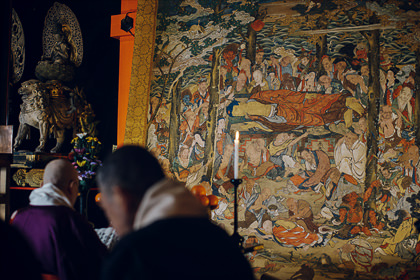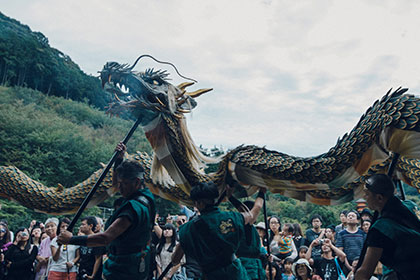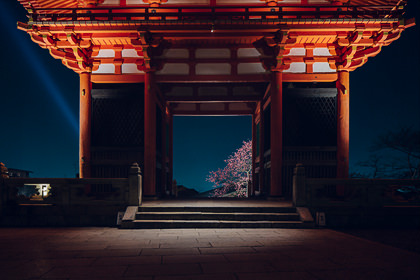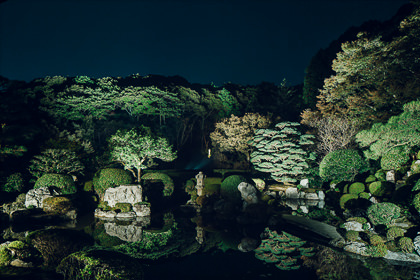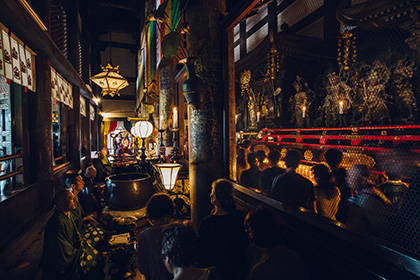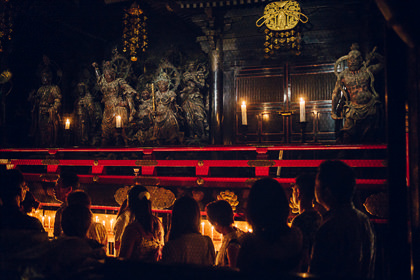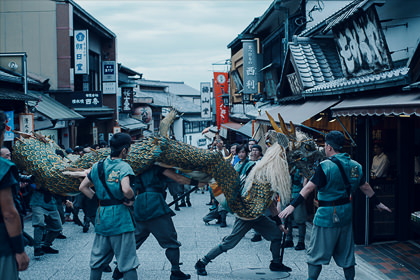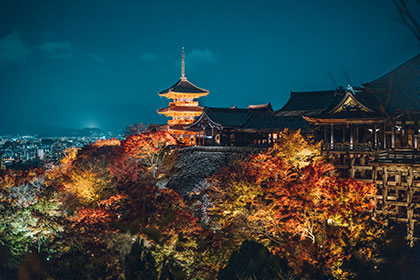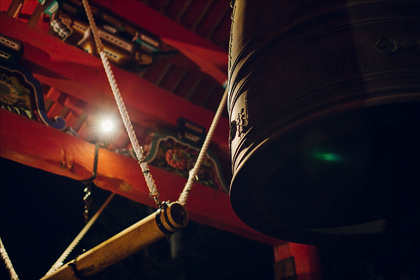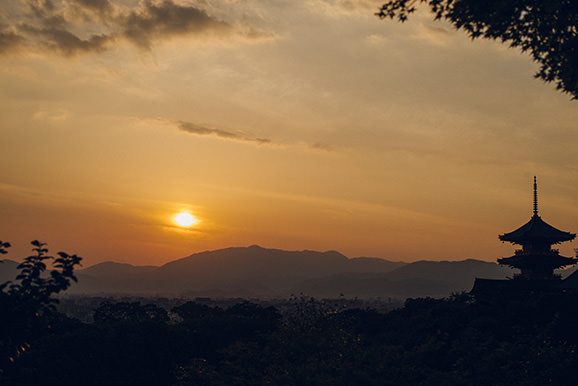I
Map of Kiyomizu-dera Temple
THE GROUNDS
-
-
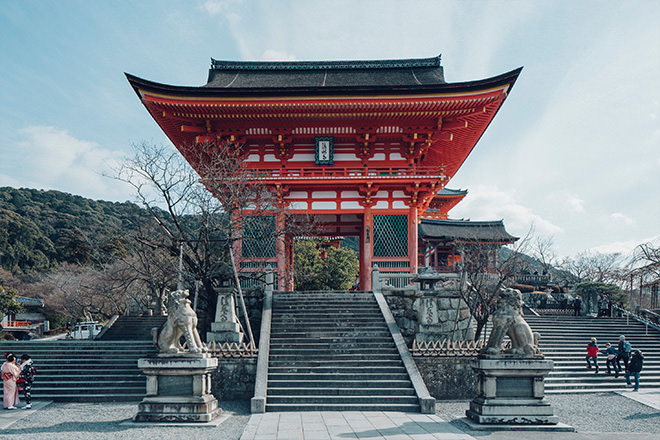
-
1.
Nio-mon
This is the main entrance of Kiyomizu-dera Temple. It was burnt down during a civil war in 1469 and reconstructed around 1500. In 2003, the gate was taken apart and refurbished. This magnificent two-story gate measures approximately 10 meters wide, 5 meters long, and 14 meters high, and displays unique features of the era when it was rebuilt.
-
-
-
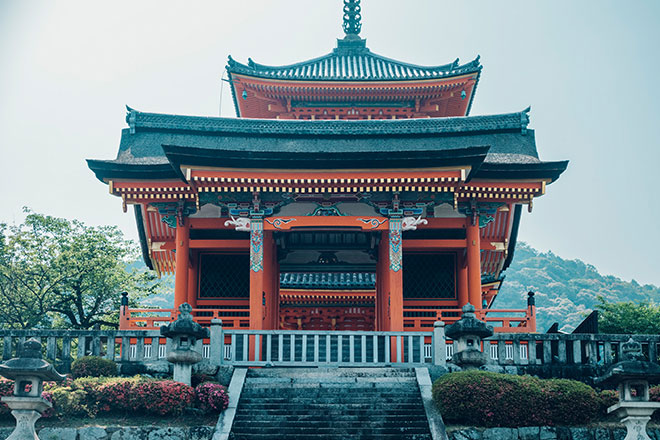
-
2.
Sai-mon (West gate)
The present building was reconstructed in 1633. With the spectacular views of the sunset from the site of Sai-mon, it has long been considered a gateway to Paradise and is known as a sacred place for Nissokan, one of the meditation practices for visualizing the Pure Land.
Nissokan
-
-
-
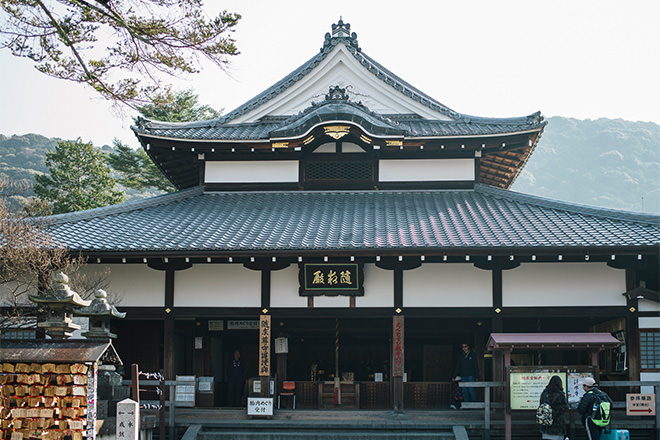
-
3.
Zuigu-do Hall
This building was constructed in 1735. The principal image of this hall is the Daizuigu Bodhisattva (a hidden Buddhist image), which kindly hears the desires and aspirations of each and every person. Shinto and Buddhist deities of matchmaking, safe birth, and child rearing are also enshrined here. The special tour for exploring the sanctified area underneath the hall, called Tainai meguri, is also offered here.
*Please note that the Tainai meguri tour is currently being run with a smaller number of participants due to the current pandemic.
-
-
-

-
4.
Hondo (Main hall)
The Main Hall in Kiyomizu-dera Temple, which stands on the steep cliff of Mt. Otowa, is a renowned wooden structure reconstructed in 1633. The principal image of Kiyomizu, the statue of the Eleven-headed Thousand-armed Kannon Bodhisattva is enshrined in the innermost section of the Hall. Using a traditional Japanese method of construction, it was built solidly enough to support the stage, which is always bustling with many visitors.
Learn more about the Main Hall
-
-
-
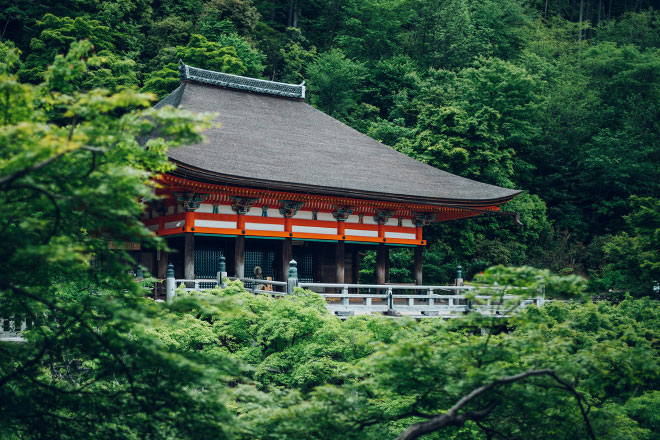
-
5.
Okuno-in Hall
Okuno-in Hall stands directly above Otowa Waterfall. The present building was rebuilt at the same time as the Main Hall in 1633. Okuno-in also boasts a spacious stage constructed using a unique method, just like the Main Hall. The stunning view of the Main Hall stage and the Kyoto cityscape from here make it a favorite photo opportunity for visitors.
-
-
-
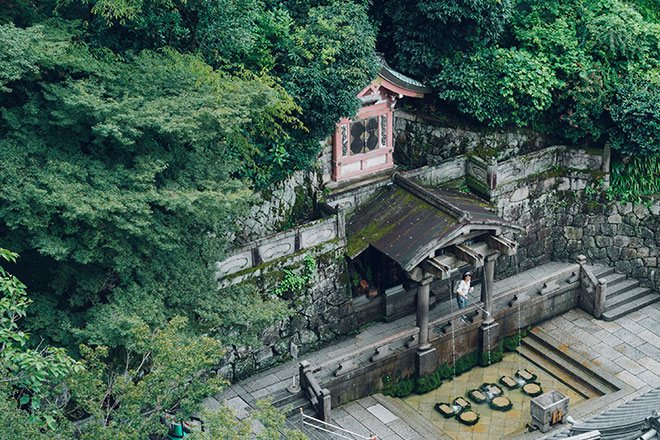
-
6.
Otowa no taki (Otowa Waterfall)
Kiyomizu-dera Temple originates from Otowa Waterfall and takes its name from the pureness of the waters. The clear, gushing waters have long been called “Konjiki-sui” (golden water) or “Enmei-sui” (life-prolonging water) and are suitable for use in purification. Visitors catch each of the three streams of pure water with ladles and pray for purification of their six senses and to make their wishes come true.
-
-
-
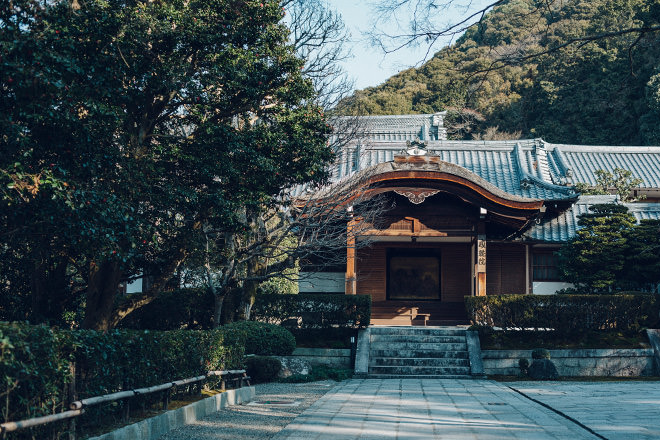
-
7.
Jojuin
Jojuin was originally built as a living quarters for the venerable Gana, a priest who had long devoted himself to the reestablishment of Kiyomizu-dera Temple after it was burnt down during the war. Years later, the building was used as the main sub-temple of Kiyomizu for maintenance of the temple buildings and to manage the temple’s finances. Jojuin is also renowned for its exquisite Moon Garden, which is specially opened to the public for a limited time each year.
Jojuin
-
II
FEEL THE KANNON'S COMPASSION

Traditional events & rituals and special viewings
Traditional events & rituals and special viewings
EVENTS & RITUALS
Many traditional events and rituals are held at Kiyomizu-dera Temple.
Throughout the grounds, the Kannon’s merciful heart prevails.
EVENTS SCHEDULE IN 2024
-
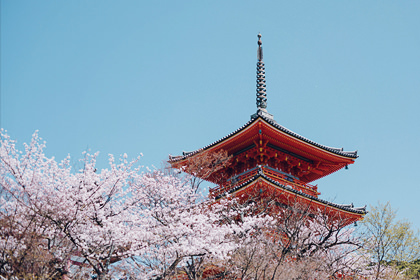
-
Cherry blossoms
late March to
early April
-
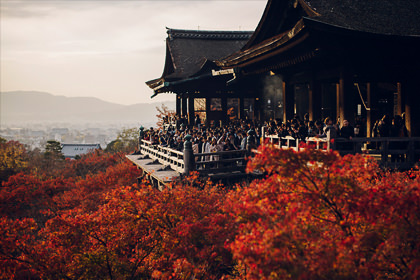
-
Autumn leaves
mid-November to
early December
The best viewing times vary every year.
Visit our Facebook page or the news page on this website and check updates on the blossoming times and changes in color.
| Period | Events | |||
|---|---|---|---|---|
| Jan.1 — Jan.7 |
|
|||
| Feb.15 |
|
|||
| Mar.15 |
|
|||
| Mar.23 — Mar.31 |
|
|||
| Apr.3 |
|
|||
| May.3 — May.6 |
|
|||
| Aug.9 — Aug.16 |
|
|||
| Aug.14 — Aug.16 |
|
|||
| Sep.15 |
|
|||
| Nov.18 — Nov.30 |
|
|||
| Nov.18 — Nov.30 |
|
|||
| Dec.31 |
|
THE KIYOMIZU HISTORY IS THE COURSE OF FAITH IN KANNON
